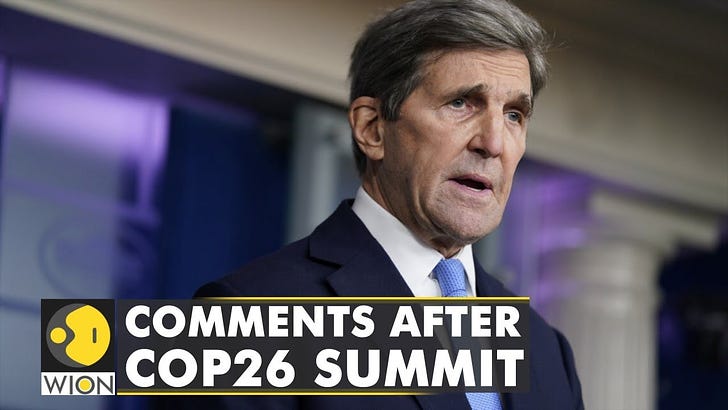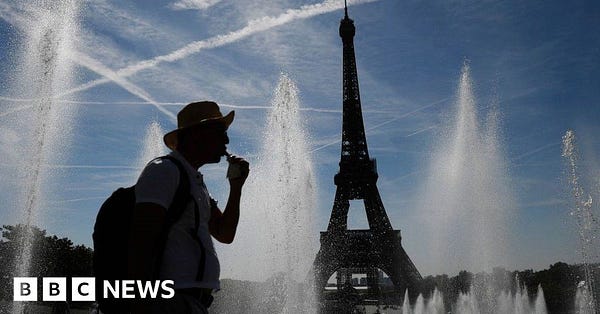No evidence manmade CO2 significantly drives global warming: Humlum
Researchers in 2013 confirmed it’s the other way around: atmospheric CO2 follows temperatures 9-12 months later (Updated 1/14/23)
Many studies published over the last 20 years indicate very weak or no evidence CO2 significantly drives global temperature, and some, like the one by Humlum et al. linked below, show temperature instead drives CO2 — in part by evaporation from oceans — with a time lag of 9-12 months.
Carbon dioxide alarmists like Al Gore and US climate envoy John Kerry avoid discussing evidence of the magnitude of any causal relation between manmade CO2 and temperatures, instead saying “the science is settled” and focusing only on CO2 emissions and temperature increases and an urgent “need” to implement higher taxes and zero carbon policies including energy rationing, despite the poverty, hunger, and electricity blackouts resulting from such policies.
Some are pushing climate lockdowns.
The goal appears to be enslavement and control.
Revealingly, virtually all world leaders pushing carbon austerity — like Kerry, Boris Johnson, and Joe Biden — also wear Covid masks that encourage your submission and obedience through deception but don’t work to reduce viral infection rates.
As with Covid, one gets a distinct impression of being scammed, and leaders’ mask wearing might be a good proxy for their carbon hoaxing.
A previous post examined a study by Triacca on a lack of Granger causality:
Our results show there is no detectable Granger causality from CO2 to temperature. In other terms, past observations of CO2 do not significantly improve the predictability of current temperature.
Now for Humlum et al. (2013): The phase relation between atmospheric carbon dioxide and global temperature
Two of the paper’s key conclusions:
There exists a clear phase relationship between changes of atmospheric CO2 and the different global temperature records, whether representing sea surface temperature, surface air temperature, or lower troposphere temperature, with changes in the amount of atmospheric CO2 always lagging behind corresponding changes in temperature.
CO2 released from anthropogene [human era] sources apparently has little influence on the observed changes in atmospheric CO2, and changes in atmospheric CO2 are not tracking changes in human emissions.
Here’s the abstract:
Using data series on atmospheric carbon dioxide and global temperatures we investigate the phase relation (leads/lags) between these for the period January 1980 to December 2011.
Ice cores show atmospheric CO2 variations to lag behind atmospheric temperature changes on a century to millennium scale, but modern temperature is expected to lag changes in atmospheric CO2, as the atmospheric temperature increase since about 1975 generally is assumed to be caused by the modern increase in CO2.
In our analysis we use eight well-known datasets: 1) globally averaged well-mixed marine boundary layer CO2 data, 2) HadCRUT3 surface air temperature data, 3) GISS surface air temperature data, 4) NCDC surface air temperature data, 5) HadSST2 sea surface data, 6) UAH lower troposphere temperature data series, 7) CDIAC data on release of anthropogene CO2, and 8) GWP data on volcanic eruptions.
Annual cycles are present in all datasets except 7) and 8), and to remove the influence of these we analyze 12-month averaged data.
We find a high degree of co-variation between all data series except 7) and 8), but with changes in CO2 always lagging changes in temperature.
The maximum positive correlation between CO2 and temperature is found for CO2 lagging 11–12 months in relation to global sea surface temperature, 9.5–10 months to global surface air temperature, and about 9 months to global lower troposphere temperature.
The correlation between changes in ocean temperatures and atmospheric CO2 is high, but do not explain all observed changes.
All the paper’s conclusions:
There exists a clear phase relationship between changes of atmospheric CO2 and the different global temperature records, whether representing sea surface temperature, surface air temperature, or lower troposphere temperature, with changes in the amount of atmospheric CO2 always lagging behind corresponding changes in temperature.
(1) The overall global temperature change sequence of events appears to be from 1) the ocean surface to 2) the land surface to 3) the lower troposphere.
(2) Changes in global atmospheric CO2 are lagging about 11– 12 months behind changes in global sea surface temperature.
(3) Changes in global atmospheric CO2 are lagging 9.5–10 months behind changes in global air surface temperature.
(4) Changes in global atmospheric CO2 are lagging about 9 months behind changes in global lower troposphere temperature.
(5) Changes in ocean temperatures appear to explain a substantial part of the observed changes in atmospheric CO2 since January 1980.
(6) CO2 released from anthropogene sources apparently has little influence on the observed changes in atmospheric CO2, and changes in atmospheric CO2 are not tracking changes in human emissions.
(7) On the time scale investigated, the overriding effect of large volcanic eruptions appears to be a reduction of atmospheric CO2, presumably due to the dominance of associated cooling effects from clouds associated with volcanic gases/aerosols and volcanic debris.
(8) Since at least 1980 changes in global temperature, and presumably especially southern ocean temperature, appear to represent a major control on changes in atmospheric CO2.









all the ‘narratives’ are obvious scams with deadly impacts.
highly recommend California Globe series ‘The Abundance Choice’ by Edward Ring outlining decades of ongoing dystopian Californian water mismanagement, manufactured ‘water shortage’ to be reflected in food shortages for everyone in the near future.
Volcanos alone release WAY more carbon in the air than humans. Now, I’d argue we don’t help the environment through pollution, toxic chemical manufacturing, destruction of forests, man-made ecological disasters, and so on…but we can not control the climate, only influence it…just like inflation.